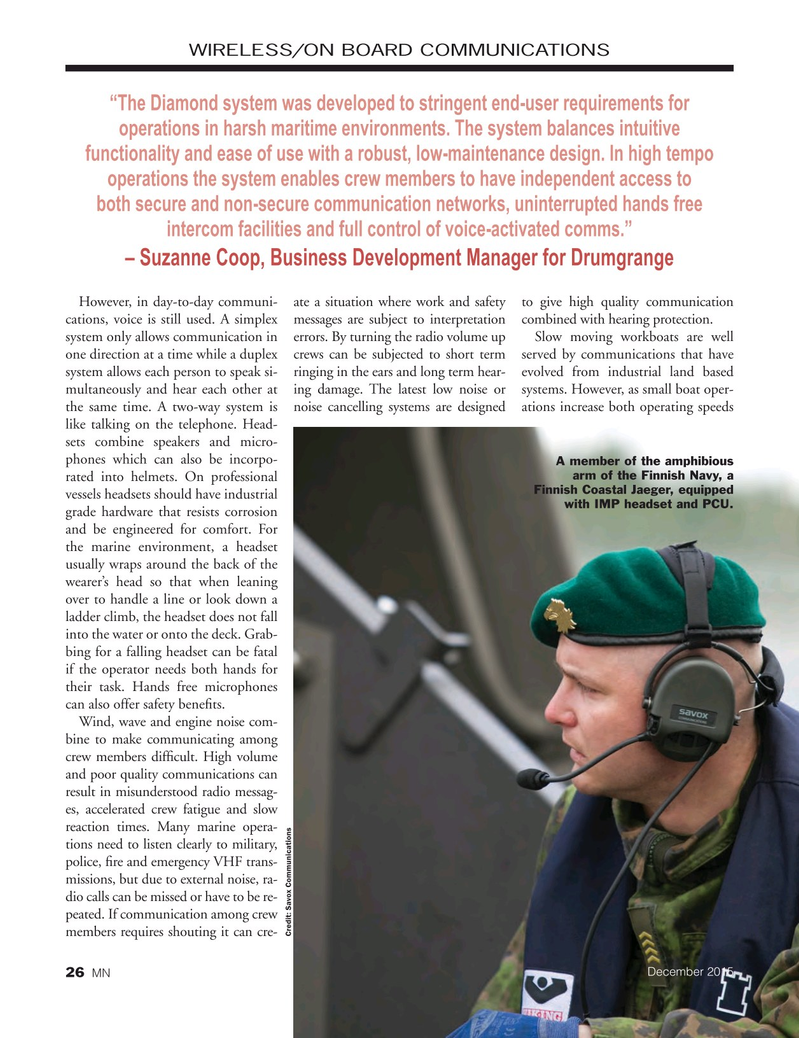
Page 26: of Marine News Magazine (December 2015)
Innovative Products & Boats of 2015
Read this page in Pdf, Flash or Html5 edition of December 2015 Marine News Magazine
WIRELESS/ON BOARD COMMUNICATIONS “The Diamond system was developed to stringent end-user requirements for operations in harsh maritime environments. The system balances intuitive functionality and ease of use with a robust, low-maintenance design. In high tempo operations the system enables crew members to have independent access to both secure and non-secure communication networks, uninterrupted hands free intercom facilities and full control of voice-activated comms.” – Suzanne Coop, Business Development Manager for Drumgrange
However, in day-to-day communi- ate a situation where work and safety to give high quality communication cations, voice is still used. A simplex messages are subject to interpretation combined with hearing protection.
system only allows communication in errors. By turning the radio volume up Slow moving workboats are well one direction at a time while a duplex crews can be subjected to short term served by communications that have system allows each person to speak si- ringing in the ears and long term hear- evolved from industrial land based multaneously and hear each other at ing damage. The latest low noise or systems. However, as small boat oper- the same time. A two-way system is noise cancelling systems are designed ations increase both operating speeds like talking on the telephone. Head- sets combine speakers and micro- phones which can also be incorpo-
A member of the amphibious arm of the Finnish Navy, a rated into helmets. On professional
Finnish Coastal Jaeger, equipped vessels headsets should have industrial with IMP headset and PCU.
grade hardware that resists corrosion and be engineered for comfort. For the marine environment, a headset usually wraps around the back of the wearer’s head so that when leaning over to handle a line or look down a ladder climb, the headset does not fall into the water or onto the deck. Grab- bing for a falling headset can be fatal if the operator needs both hands for their task. Hands free microphones can also offer safety bene? ts.
Wind, wave and engine noise com- bine to make communicating among crew members dif? cult. High volume and poor quality communications can result in misunderstood radio messag- es, accelerated crew fatigue and slow reaction times. Many marine opera- tions need to listen clearly to military, police, ? re and emergency VHF trans- missions, but due to external noise, ra- dio calls can be missed or have to be re- peated. If communication among crew members requires shouting it can cre-
Credit: Savox Communications
December 2015 26 MN
MN Dec15 Layout 18-31.indd 26 11/24/2015 9:57:25 AM

 25
25

 27
27
